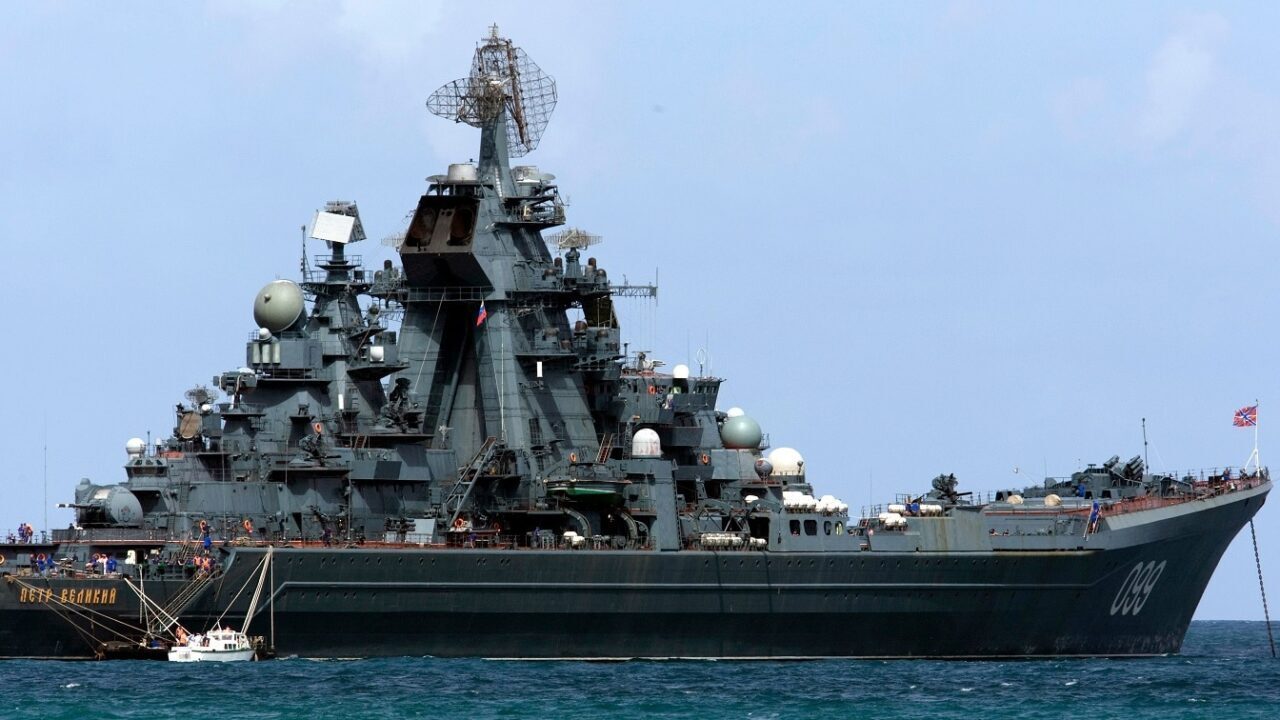After years of delays, a series of mishaps that would be comical if several people weren’t killed, and a small fortune spent, Russia’s flagship aircraft carrier could finally return to service next year. That is, of course barring any further misfortunes.
The Admiral Kuznetsov and the Kirov-class cruiser Admiral Nakhimov are both slated to be “reintegrated” into the Russian navy in 2024, following extensive repairs and modernizations, Navy Recognition reported on Monday, citing Russian-based media.
It quoted Vladimir Korolev, deputy head of the United Shipbuilding Corporation (USC) for military shipbuilding, who said on Saturday that the timeline for delivery of the two warships had remained unchanged and both are scheduled to return to service by the end of next year.
New and “Improved” Aircraft Carrier for Russia – What We Know
The aircraft cruiser has been undergoing a refit since 2018, and it was initially scheduled to be returned to duty by 2020. However, the warship has suffered what can only be described as an odyssey of unfortunate mishaps, and problems began almost as soon as the ship began its refit.
In November 2018, Admiral Kuznetsov was damaged when a 70-ton floating crane fell on the warship’s flight deck, killing one worker and injuring four more. Just over a year later, a fire broke out in the engine room during a welding accident, leaving two people dead, while 14 suffered injuries from fire and smoke inhalation. In addition, the actual drydock, which was vital to the repairs, was also damaged during a power outage, further delaying the refit.
Corruption has further contributed to the lack of progress on the carrier’s refit.
In March 2021, Yevgeny Zudin, general director of Shipyard No. 10 in Polyarny, was arrested under suspicion of the theft of 45 million rubles (approximately $600,000) that had been allocated to the repair of the Russian Navy’s Northern Fleet flagship.
According to the Russian official, the carrier is finally nearly at the end of its refit.
Upgrades reportedly include a new flight deck with a ski-jump, new propulsion systems, updated cabling, an improved flight control system for deck aviation, and a new navigation system. The refit will not address the propulsion system, however, and the effectiveness of the flattop has remained one for debate – especially as it will likely continue to be fueled by mazut, and as a result will likely still billow a heavy black smoke that can be seen at a great distance.
When the renovation and upgrades are complete, the aircraft carrier’s service life will be extended by 20 years. Of course, the carrier was originally scheduled to be retired by the end of this decade, so it remains unclear how long the warship will actually serve – if it actually does return to service as Moscow has claimed.
Even Longer Refit
The Admiral Nakhimov has also endured a lengthy refit that began in 1999, while the actual work only commenced in 2013. Launched in 1986, and commissioned two years later, the nuclear-powered battlecruiser has spent more time awaiting repairs than in actual service.
Moreover, her sister ship Pyotr Velikiy (Peter the Great), which is currently the Russian Navy’s acting flagship, is currently scheduled to be retired when Admiral Nakhimov returns to service. That decision was made due to the high cost of the refit of the Admiral Nakhimov.
In other words, even when its upgraded battlecruiser rejoins the fleet, Russia will simply retire another one and in essence won’t see any added strength to its surface combatants.
At best, the Kremlin will see two Cold War-era ships returned to service, but we’ll have to wait to see whether they’re truly new and improved.
Author Experience and Expertise
A Senior Editor for 19FortyFive, Peter Suciu is a Michigan-based writer. He has contributed to more than four dozen magazines, newspapers, and websites with over 3,200 published pieces over a twenty-year career in journalism. He regularly writes about military hardware, firearms history, cybersecurity, politics, and international affairs. Peter is also a Contributing Writer for Forbes and Clearance Jobs. You can follow him on Twitter: @PeterSuciu.
From the Vault
The Navy Sent 4 Battleships To Attack North Korea
‘Sir, We Hit a Russian Submarine’: A U.S. Navy Sub Collided with a Nuclear Attack Sub

